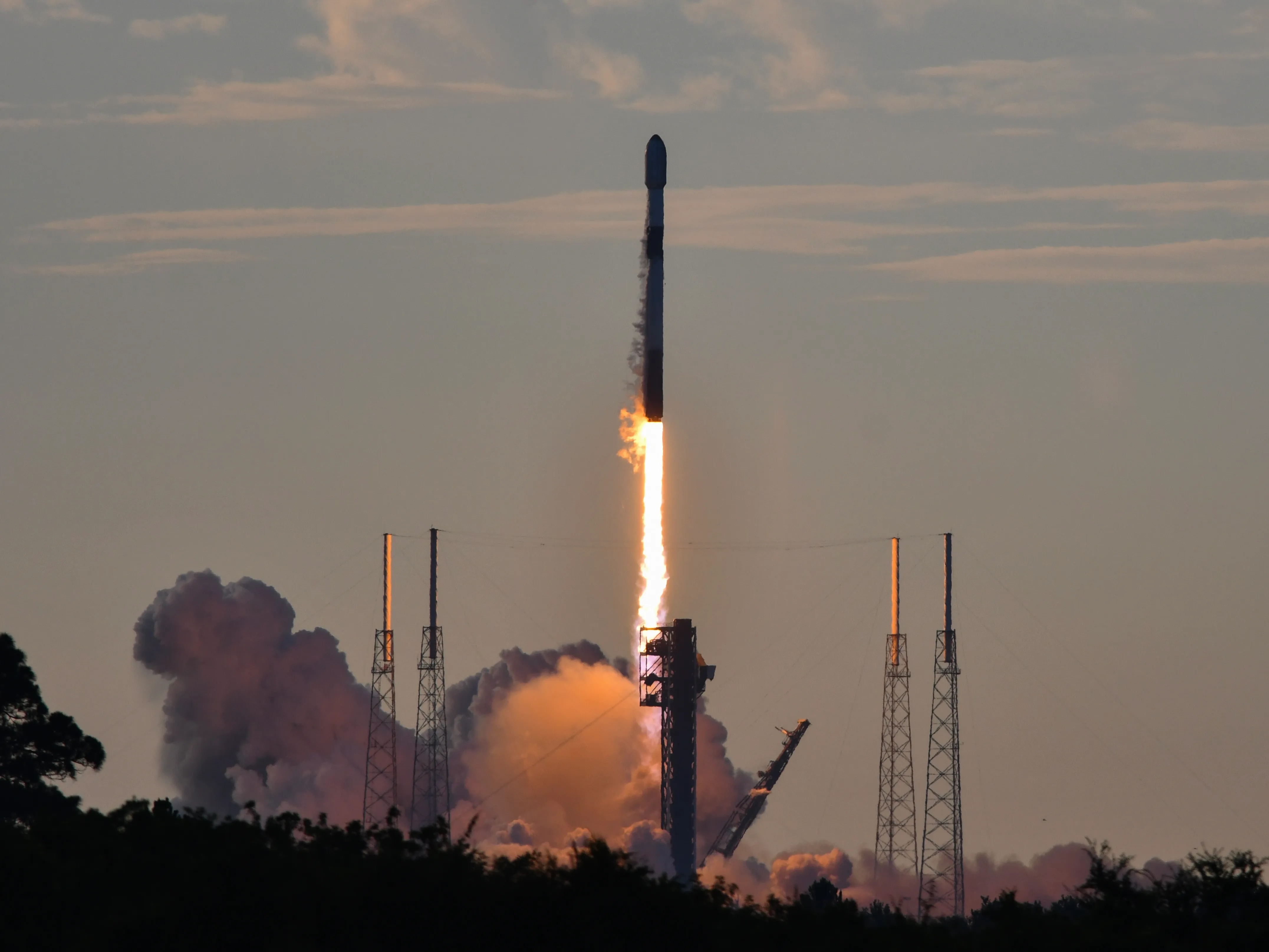26.07.2024

The familiar rumble of SpaceX's Falcon 9 rocket has been absent from Space Coast skies the past two weeks — but the Federal Aviation Administration has granted the company permission to return to flight amid its ongoing anomaly investigation.
And SpaceX is already targeting 12:21 a.m. Saturday for its next Falcon 9 mission. The 230-foot rocket will launch 23 Starlink satellites into low-Earth orbit from pad 39A at NASA's Kennedy Space Center.
FAA officials had grounded the Falcon 9 rocket fleet while SpaceX studied why a second-stage engine failed following a July 11 launch from Vandenburg Space Force Base in California. The engine suffered an liquid oxygen leak — and 20 Starlink satellites got deployed into a lower-than-intended orbit and later burned up in the atmosphere.
Thursday night, SpaceX announced the findings of its engineering review, blaming a liquid oxygen leak that developed within the insulation around the upper-stage engine. In tandem, the FAA granted approval for the Falcon 9 to return to flight and announced that "no public safety issues were involved in the anomaly."
"When a public safety determination request is received, the agency evaluates safety-critical systems, the nature and consequences of the anomaly, the adequacy of existing flight safety analysis, safety organization performance, and environmental factors," an FAA statement said.
"If the FAA agrees no public safety issues were involved, the vehicle may return to flight while the investigation remains open, provided all other license requirements are met," the statement said.
In a statement, SpaceX announced the liquid oxygen leak traced to a crack in a sense line for a pressure sensor attached to the vehicle’s oxygen system.
"This line cracked due to fatigue caused by high loading from engine vibration and looseness in the clamp that normally constrains the line. Despite the leak, the second stage engine continued to operate through the duration of its first burn, and completed its engine shutdown, where it entered the coast phase of the mission in the intended elliptical parking orbit," the statement said.
For near-term Falcon 9 launches, the failed sense line and sensor on the second-stage engine will be removed, the statement said.
The Falcon 9 is the workhorse of the American rocket fleet. Besides launching Starlink satellites, it also flies commercial and national-security satellites to orbit, as well as ferrying astronauts and cargo to the International Space Station.
SpaceX completed a static fire test of a Falcon 9 booster overnight Wednesday at Launch Complex 40 at Cape Canaveral Space Force Station, Spaceflight Now reported.
With SpaceX making up the bulk of the Space Coast launches — 46 out of 50 so far in 2024 — it has been a quiet two weeks since the Falcon 9 has been grounded.
SpaceX has Florida astronaut launches coming up
SpaceX has two crewed missions that were slated to take off in the coming weeks. Launch dates remain unknown, in light of the FAA investigation:
- Polaris Dawn: A private mission commanded by Shift4 founder Jared Isaacman, which will include the first spacewalk by a private citizen. In 2021, Isaacman commanded and paid for Inspiration4, the first orbital spaceflight with only private citizens aboard.
- NASA Crew-9: The latest NASA crew will swap places onboard the International Space Station with Crew-8.
Be sure to follow the FLORIDA TODAY Space Team for the latest from the Space Coast.
Quelle: Florida Today
